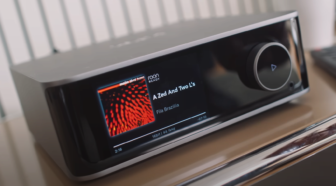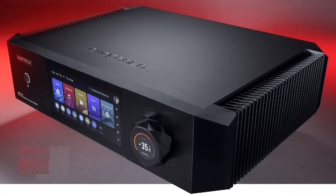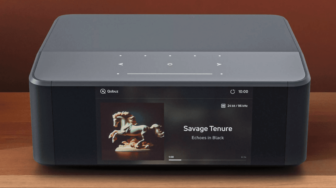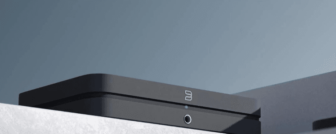Bluesound Powernode Edge Review
Bluesound’s successful streaming integrated amplifier Powernode is getting a little brother. How much of the DNA of the popular predecessor has found its way into the more affordable Edge?
by Julian Kienzle, Julian Holländer
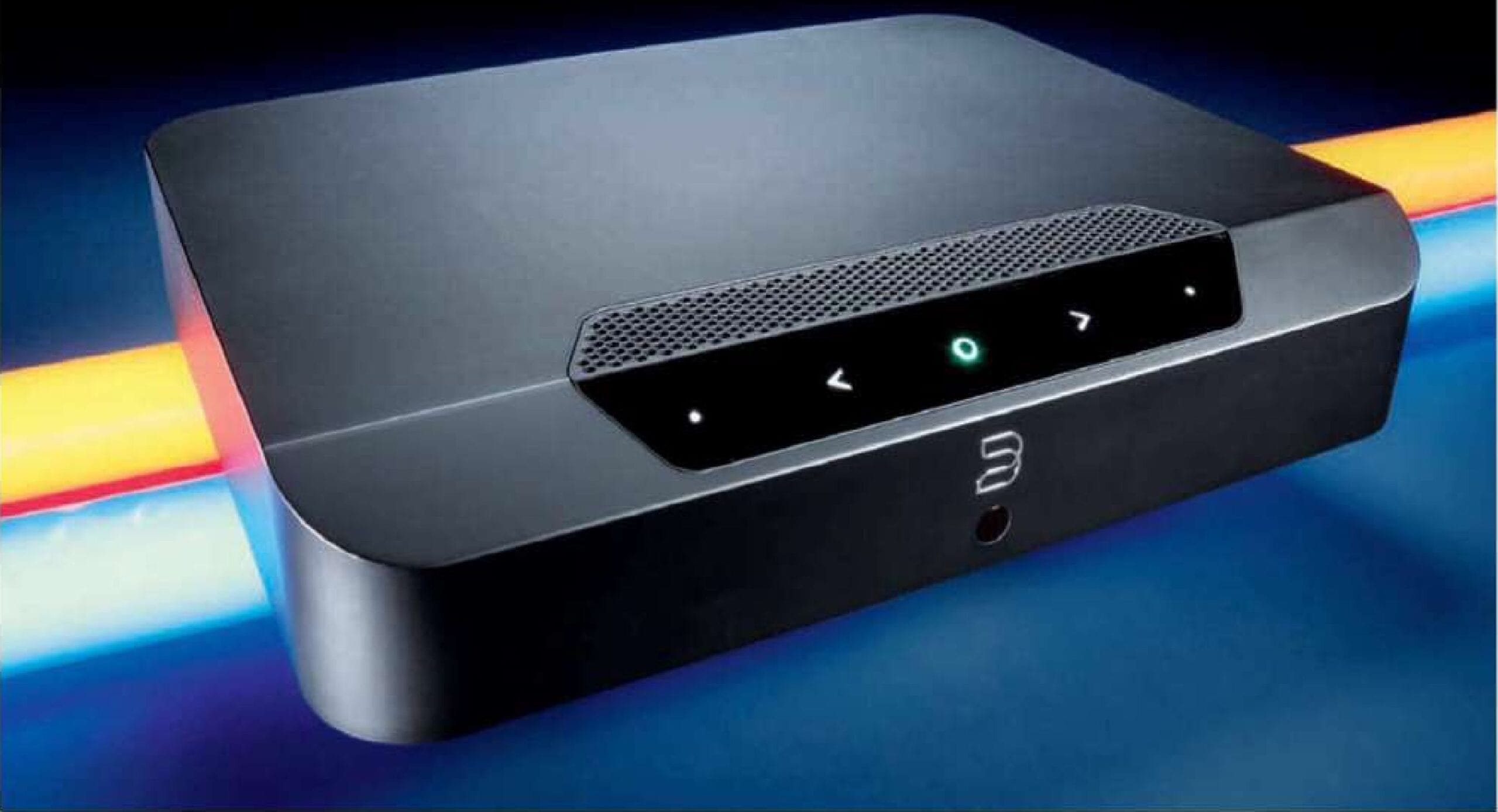
OUR LISTENING SETUP
Warhaus: Warhaus

The second album of the solo project by Balthazar frontman Maarten Devoldere shows a strong influence of Leonard Cohen and combines the deep voice with the finest indie pop.
Just last year, the Canadians from Bluesound updated their two probably most important products for us audiophiles—the fourth and by far best generation of the siblings Node and Powernode was born. While the former is dedicated entirely to streaming music as a pure streamer, the Powernode is to this day essentially a Node with additional amplifiers. It offers a more than competitive value that could satisfy even some sonically more demanding music enthusiasts. Now, Bluesound provides the Powernode with a little brother—let’s see what the new Powernode “Edge” has to offer.
The additional cost to equip the Node with extra “Power” was never particularly high, but with the Edge, it becomes almost laughable: Just an extra $ needs to be placed on the counter to get the Powernode Edge instead of the amp-less Node, which brings almost no compromises in terms of features compared to its big brother.
The most important limitation is certainly the amplifier section, which, with only 40 watts of specified continuous power, is half as strong. Apart from that, the compromises can be counted on one hand: For instance, we have to make do with only one combined analog-digital input and without preset buttons on the control panel—actually hardly worth mentioning.
For home theater enthusiasts, it should also be mentioned that, unlike the regular Powernode, the Edge cannot be used for driving the front channels in a surround setup. Here, Lenbrook—the parent company behind Bluesound and NAD—probably wanted to artificially preserve one of the unique selling points of the big brother.
Not so bad, since we would anyway recommend, given the investment involved in a Bluesound home theater with passive speakers, to go directly for the big brother for the front channels. The Edge has enough power to comfortably exceed the pain threshold with the right speakers and in smaller rooms, but it cannot quite match the finesse and control of the larger Powernode.
While we could certainly be happy with the latter in the long term, we noticed the cost-cutting measures in the Edge more noticeably in terms of sound. On the other hand, it’s no wonder—we repeat: the Edge costs only $ more than the pure streamer Node. That’s half as much as Bluesound’s optional remote control RC1 changes hands for—that’s something to savor! Considering this, what it teased out of our speakers was downright breathtaking. To come even close to this performance with a Node and an external amplifier would certainly require multiple times the investment.
On The Edge
Character-wise, the Edge is not far from its big brother in terms of sound, making it excellent for driving the surround rear channels while a standard Powernode handles the front. Even standalone, it actually puts on a really good show, especially as long as you don’t turn the volume knob up to the limiter. With Hank Mobley’s “Soul Station,” for example, everything was there that the song needs—though not quite as controlled, three-dimensional, and silky as with the normal Powernode—but absolutely harmonious.

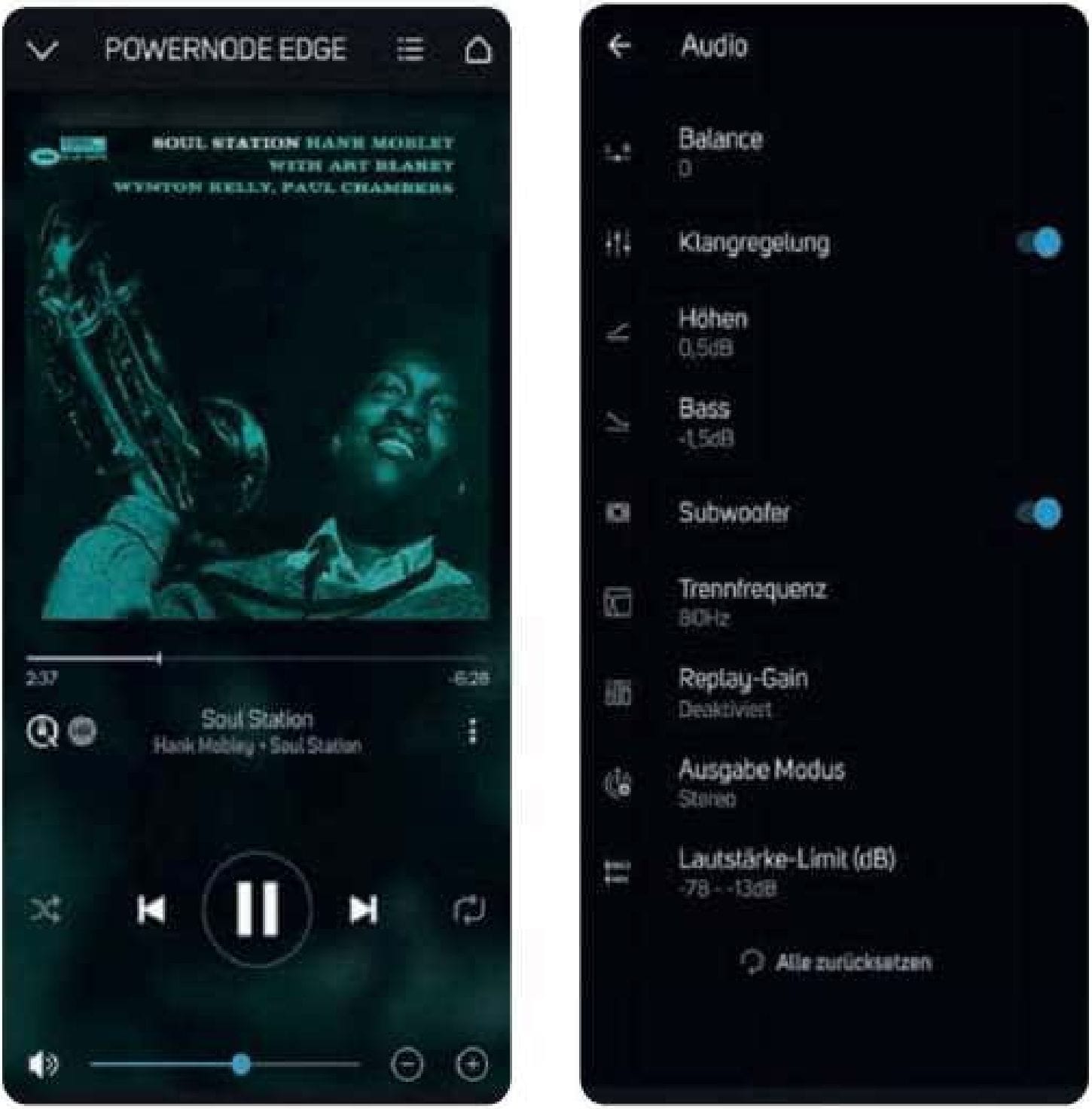
‘Love’s A Stranger’ by Warhaus also brings joy, building a rich wall of sound before us and making us tap our feet in time. It’s true, here too the bass could be even more controlled, the separation between the performers sharper, and the voice a bit softer, but that’s hardly more than snobbish nitpicking.
The Edge does exactly what it’s supposed to do; it delivers the reference-worthy feature set of the Bluesound Node with a couple of amplifiers that are more than sufficient for absolutely any use case where a normal Powernode would be overkill. And for these situations, finding a better offer with similar features and performance would be anything but easy. We’d even go so far as to say that in homes with an existing hi-fi system and Bluesound setup, there is no better way to supply the remaining rooms with music!
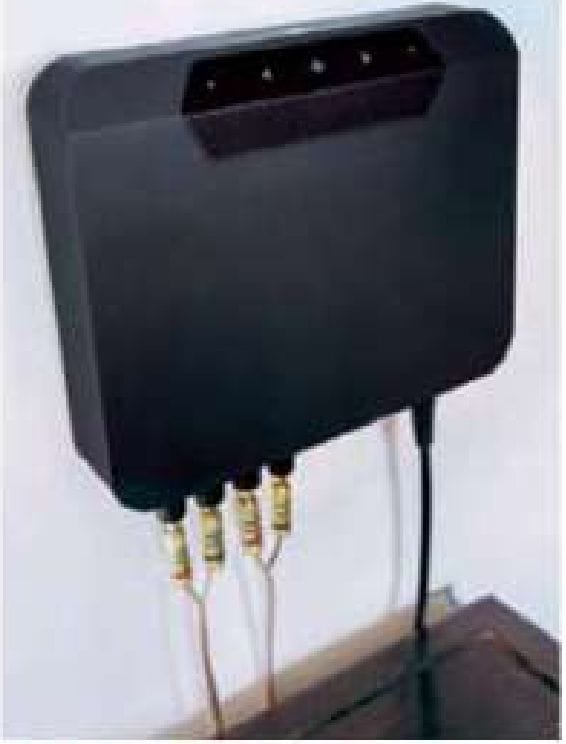
THE HUB IN THE APP
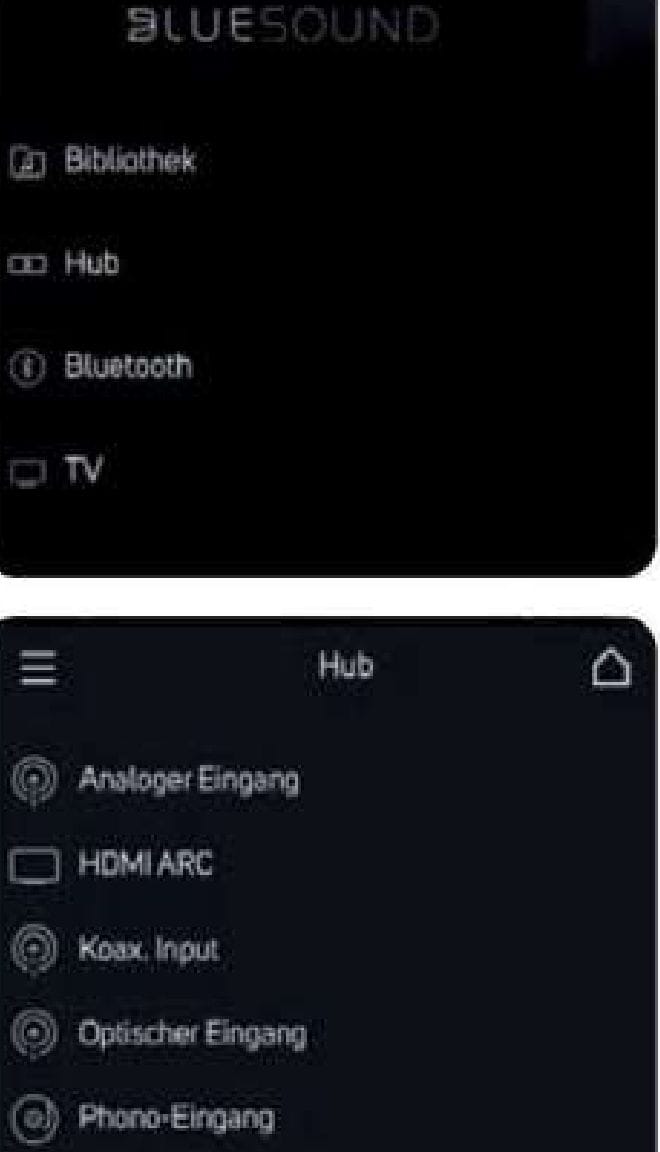

This is also ensured by the extremely compact design for an integrated amplifier, as well as the included wall mount and the front-angled instead of upward-facing control panel, which make it possible to use the Edge virtually anywhere there is a power outlet and internet. Added to this is the extraordinarily extensive feature package with streaming from almost every conceivable source, whether on the home network or from the internet, bi-directional Bluetooth aptX HD, and AirPlay 2.
Tidal users will be pleased that, of course, the Edge—like all Bluesound devices—supports MQA. And for feeding from the television, there’s an HDMI eARC input. We could even connect a subwoofer directly and even set a crossover frequency for it in the app’s audio settings.
We used the Edge a lot at the desk and on the TV with a pair of compact speakers and were practically thrilled, also because the control with the BluOS app is, as usual, snappy, reliable, and intuitive. Together with the high flexibility and excellent features, the Powernode Edge is thus a bang for the buck and an extremely successful addition to the Bluesound portfolio. The Canadians have done it again: I’m Blue…
THE BLUESOUND HUB: MORE SOURCES FOR BLUOS
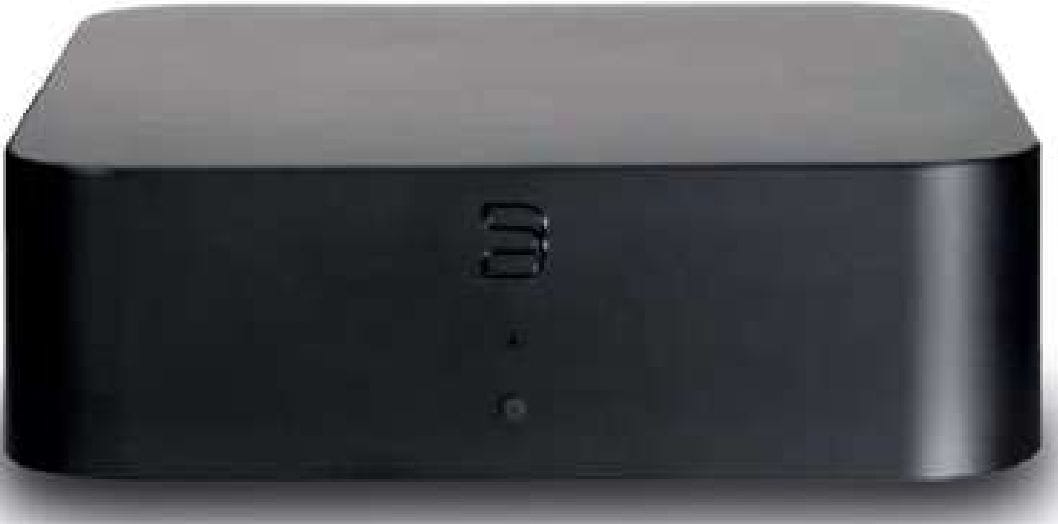
Anyone who, thanks to the Powernode—or any BluOS device—becomes interested in topics like multiroom, or wants to listen to their physical music collection or TV throughout the whole house, might take an interested look at the new Hub: The small box from Bluesound feeds connected sources into the BluOS network, from where, for example, the (Power)Node or an amplifier of the sister brand NAD equipped with the corresponding module streams the music.
The desired source is first connected via HDMI (eARC), optical, coaxial, RCA, or phono MM (!) before the corresponding input is selected in the BluOS app like a streaming service. Analog signals are prepared via A/D converter; purely digital signals go up to respectable hi-res resolutions of 24-bit / 192 kHz.
In our tests, everything worked flawlessly on the Hub; integrating it into the BluOS network is as simple as usual; switching between sources was as smooth, easy, and direct as, for example, changing tracks from a streaming service. Plug in the cables and one click in the app, and the CD player or turntable plays throughout the home, provided there are BluOS endpoints.
The Hub can stream two sources (1x digital and 1x analog) simultaneously, while BluOS provides multiroom capability. In practice, this could mean: TV sound from the living room is streamed to the kitchen, while the turntable standing next to it is heard in the bedroom and simultaneously on the balcony.
Also not unimportant: playback between different streamers is perfectly synchronized; even with TV sound, two separately controlled speakers don’t “talk over” each other.
Especially, the built-in phono preamp is sometimes a bit quiet; but sonically more than solid. Considering that the “reverse streamer” brings both phono equalizer and converter, that’s already impressive in terms of sound.
If available, it would of course be recommended—but by no means necessary—to use a high-quality phono preamp upstream and use the RCA input. Just as it makes sense in terms of minimal conversions to feed the Hub directly digitally.
Lastly, but not to be forgotten: The sources cannot, of course, be controlled via the app; we unfortunately still have to change the CD or lift the tonearm ourselves…
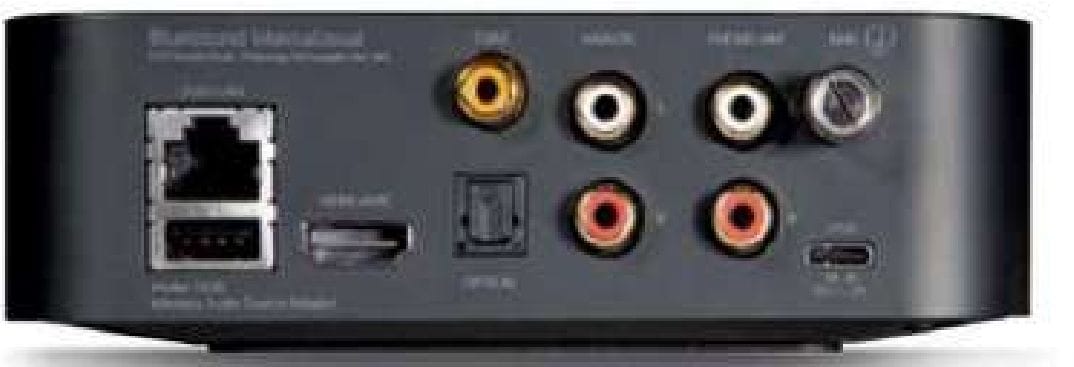
TEST EQUIPMENT
Streamer: Bluesound Node & Hub
Amplifier: Bluesound Powernode
Speakers:
KEF LS50 Wireless II,
B&W 607 S2,
DALI Epicon 6,
DALI Oberon 3
Cables: Silent Wire, Audioquest, Black Connect, van den Hul, In-Akustik, HMS

OPTIONAL A remote control is not included; those who still need one can either program any IR remote or order the expensive but well-made RC1 from Bluesound.
Bluesound Powernode Edge Specs
in Black or White
Dimensions: 22x5x21 cm (WxHxD)
Warranty: 2 years
Contact: DALI
www.dali-speakers.com
Measured Lab Data
- Continuous Power (8 Ω / 4 Ω): 48 W / 82 W
- Peak Power into 4 Ω (1 kHz): 130 W
- Distortion (THD) at 50 mW / 5 W / 1 dB below max power:
- 0.045 % / 0.01 % / 0.01 %
- Intermodulation Distortion at 50 mW / 5 W / 1 dB below max:
- 0.007 % / 0.005 % / 1.9 %
- Damping Factor into 4 Ω (63 Hz / 1 kHz / 14 kHz): 50 / 51 / 62
- Upper Cutoff Frequency (−3 dB / 4 Ω): 21 kHz
- Power Consumption (Standby / Idle): ~8.2 W
Lab Comment
“Distortion factor and intermodulation are mostly excellent. However, you shouldn’t turn the volume knob all the way up, as intermodulation at Pmax rises—something also confirmed by the listening impression.”
Features
- Inputs/Outputs:
- Combined 3.5 mm analog/digital mini‑jack input
- HDMI eARC
- LAN, Wi‑Fi
- USB for data storage/playback
- Input for IR remote
- Subwoofer output
- Accessories: Wall mount and cable included
- Wireless Capabilities:
- Bi‑directional Bluetooth with aptX HD
- AirPlay 2
- Spotify Connect
- Tidal Connect
- Roon Ready
- Supported Streaming Services: “Virtually all major platforms,” plus streaming from local network
- Hi‑Res Audio: MQA and up to 24‑bit/192 kHz support
Measurement Results
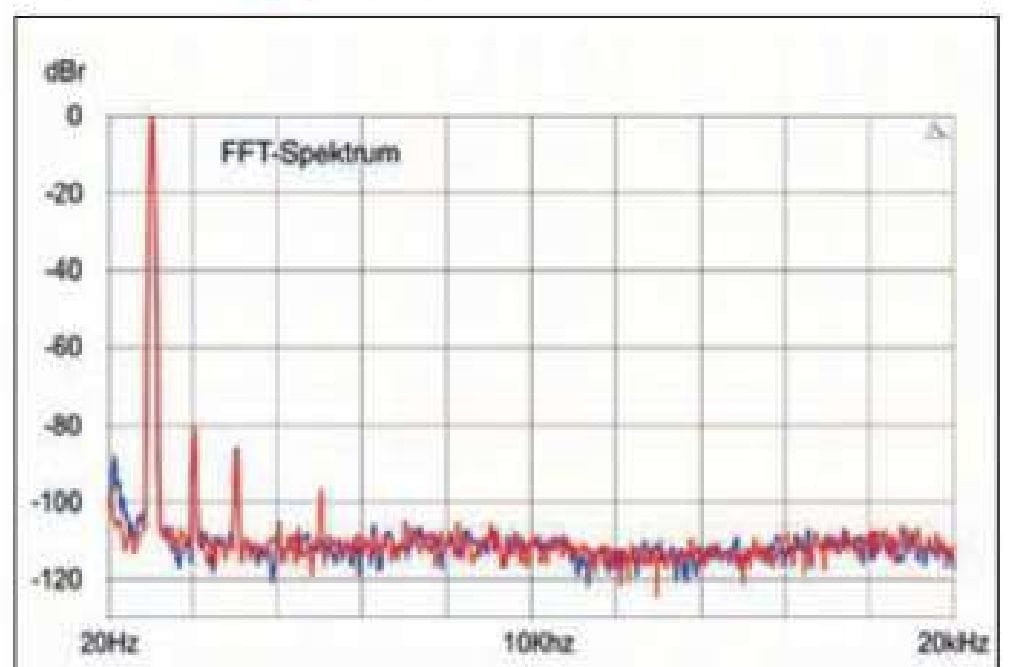
Verdict
The Powernode Edge is very attractively priced just above the amplifier-less streamer Node and noticeably below the big brother Powernode. It delivers excellent features and operation, high flexibility, and more than solid sound quality. Probably the best way to build a home theater or stereo multiroom system with Bluesound!
- Sound Level (“Klang-Niveau”): 50 %
- Approx. 5 / 10 on a 10‑point scale
- Price/Performance (“Preis/Leistung”): 5 stars
- Approx. 9.5–10 / 10 on a 10‑point scale
- Overall Verdict: “Überragend” (outstanding)
When you purchase through links on our site, I may earn an affiliate commission. Here’s how it works.










